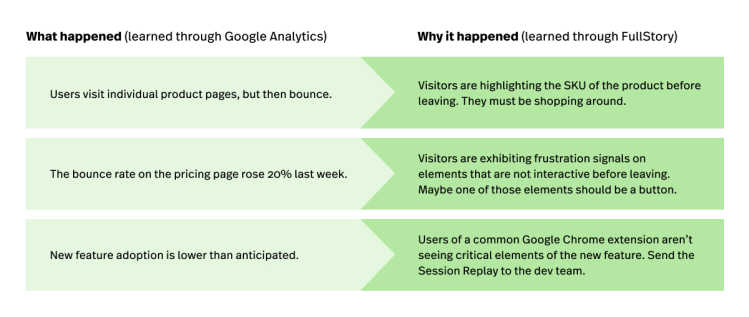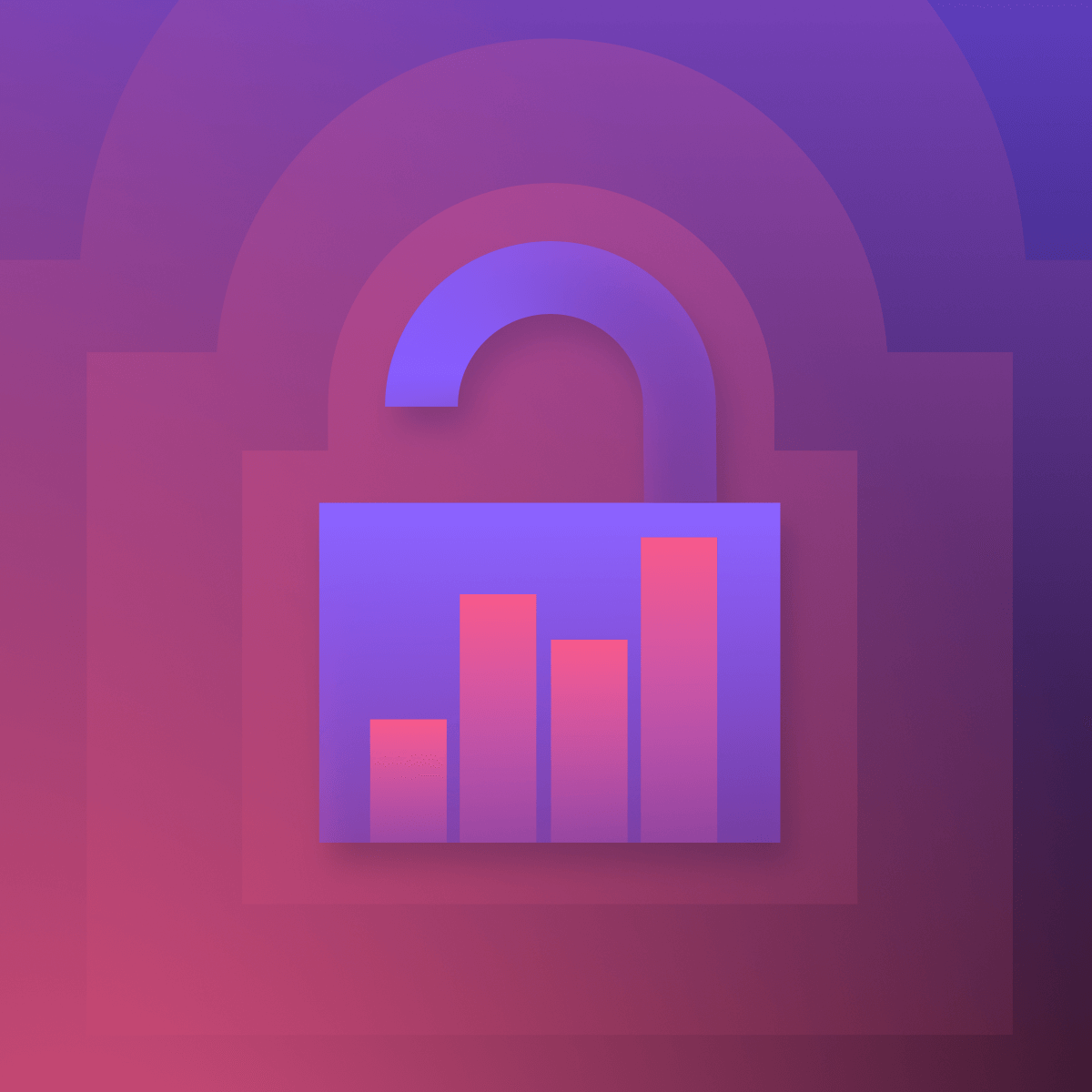Google Analytics is the lingua franca of website and app optimization.
It’s ubiquitous in product, UX, and marketing circles. And it’s one of the most popular integrations of the FullStory platform. In a word, it’s great.
While Google is notoriously hushed about usage statistics of many of their products, one 2015 estimate suggests that a jaw-dropping 52% of the entire internet uses Google Analytics in some fashion. And that was years ago—a number that’s surely accelerated since.
But Google Analytics has some considerable limitations. Teams can only see data around what is happening, not the why.
At FullStory, we’re often asked why a team would need a Digital Experience Intelligence (DXI) solution when they already have a fully-baked Google Analytics implementation.
To answer that, it’s important to understand the role both Google Analytics and DXI play in the stack of modern teams.
Why does Google Analytics come up short by itself?
Google Analytics offers insight into quantitative aspects of a site, aggregate trends in the user journey, and a general understanding of a website or app’s overall performance.
With that tool, users can unearth some pretty useful findings, such as:
Users visit individual product pages, but then bounce.
The bounce rate on the pricing page rose 20% last week.
New feature adoption is lower than anticipated.
But Google Analytics stops short in helping to answer why any of those challenges are happening.
Teams can draw inferences on why site visitors are leaving without clicking “buy,” bouncing from the homepage, or aren’t using a new site feature, but those problems can’t be eliminated without tedious, time-consuming trial and error—or a resident clairvoyant on your team.
See Digital Experience Intelligence in action.
Request a demo of the FullStory DXI platform for your product team.
How do DXI tools support Google Analytics?
DXI and Google Analytics complement and validate each other in pinpointing problem areas on websites and mobile properties. From there, DXI tools such as FullStory log, categorize, and triage the actions taken by users.
This provides clarity into why events are occurring through reviewing user sessions, analyzing digital experience data, and more. Back to the previous examples, DXI provides context and rationale that would otherwise be missed, making remediation steps more obvious:
How do you combine Google Analytics and DXI in the first place?
Many FullStory customers have invested significant time and effort into building a data layer that lets them track custom events and user variables, often via data layers provided by Google Analytics.
Which makes sense—outside of information held in a company's own servers, data layers can contain mountains of important business data, such as ecommerce conversion information and user profile data. At the same time, FullStory captures a rich, unique set of Digital Experience Intelligence data that’s chock full of the “unknown unknowns” that Google Analytics can’t provide.
It was through our work with customers that we discovered this rich vein of data that FullStory could mine to provide them more insights into the performance of their experience.
Enter FullStory’s data layer capture integrations with Google Analytics’ Enhanced Ecommerce and Event Measurement.
With the flip of a switch, FullStory is able to automatically capture common Google Analytics data layer attributes, instantly enriching the unique set of digital intelligence you get from FullStory’s autocapture capabilities.
What teams benefit from combining Google Analytics and DXI?
Google Analytics allows product, engineering, UX, and other teams to extract quantitative insight. But layering in a Digital Experience Intelligence solution such as FullStory creates additional depth for numerous teams:
Product management teams can gain global insight into product performance, high-level macro and micro conversion analytics, and a cross-functional, interdisciplinary source of truth for all functions PMs engage with.
Engineering teams can recreate and triage bugs right as users experience them, plus see root-cause and conversion impact and correlation.
UX teams can field test against a global population instead of a sample set of users, and rapidly test hypotheses.
Analytics teams can combine FullStory data to existing data sets with Data Export API to for total understanding of digital experience.
Support teams can experience what a troubled user is experiencing—in parallel, like they are sitting side-by-side.
Design teams can monitor and quantify frictional design components and track progress of new design constructs.
What’s more, each team benefits from proactive management of digital products, native mobile apps, and websites. While Google Analytics can tell you what’s already happened, DXI platforms such as FullStory can use user data in aggregate to find problem spots before users experience them.
The final verdict
DXI tools such as FullStory and Google Analytics aren’t in direct opposition to each other. They’re both important parts of the modern marketing, UX, and product management stack.
But teams that rely exclusively on Google Analytics for gathering and parsing user data are missing critical information needed to optimize and improve work.
Thousands of leading product, UX, and engineering teams are converging FullStory with Google Analytics to accelerate product development and eradicate bugs.





